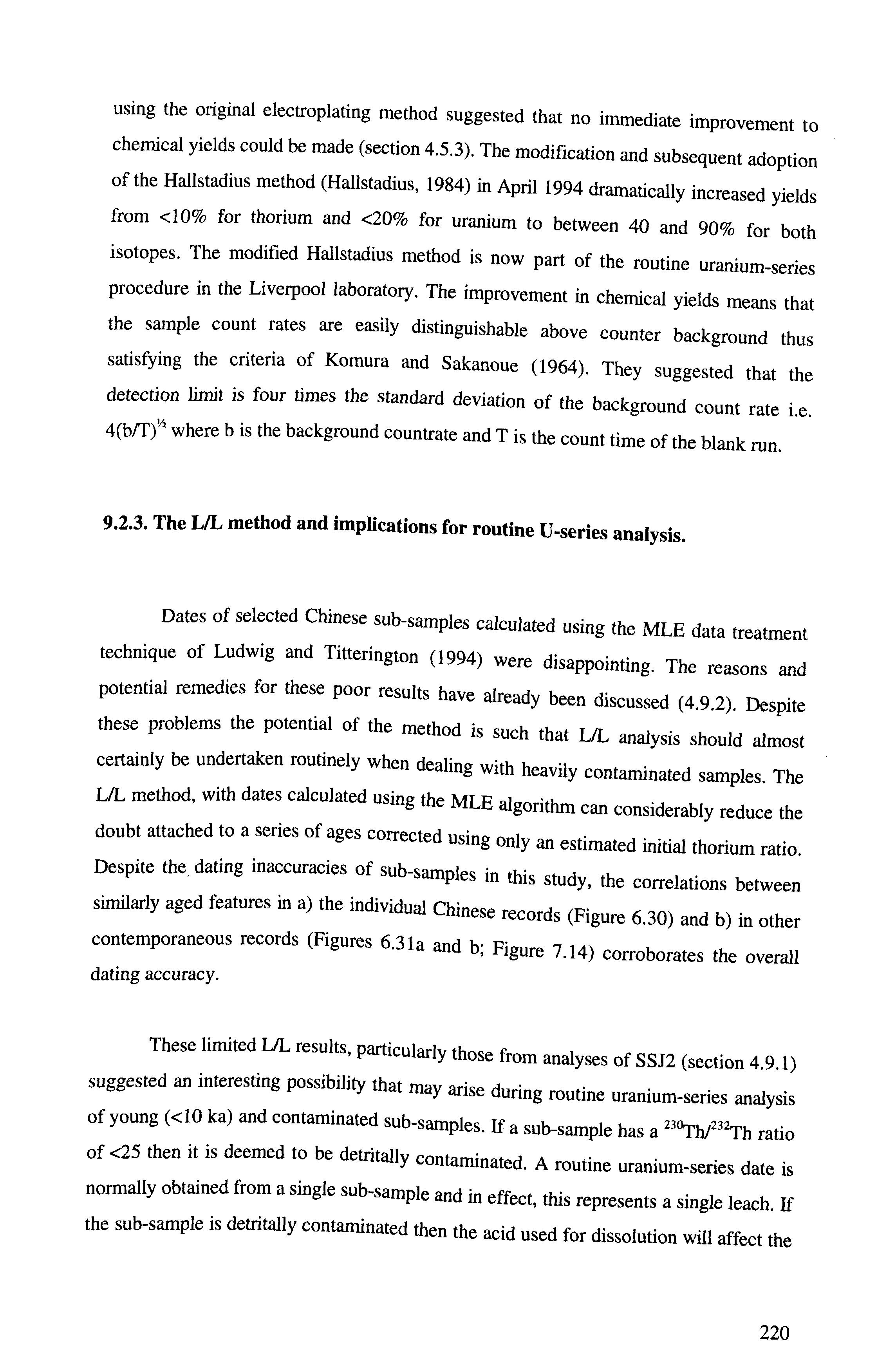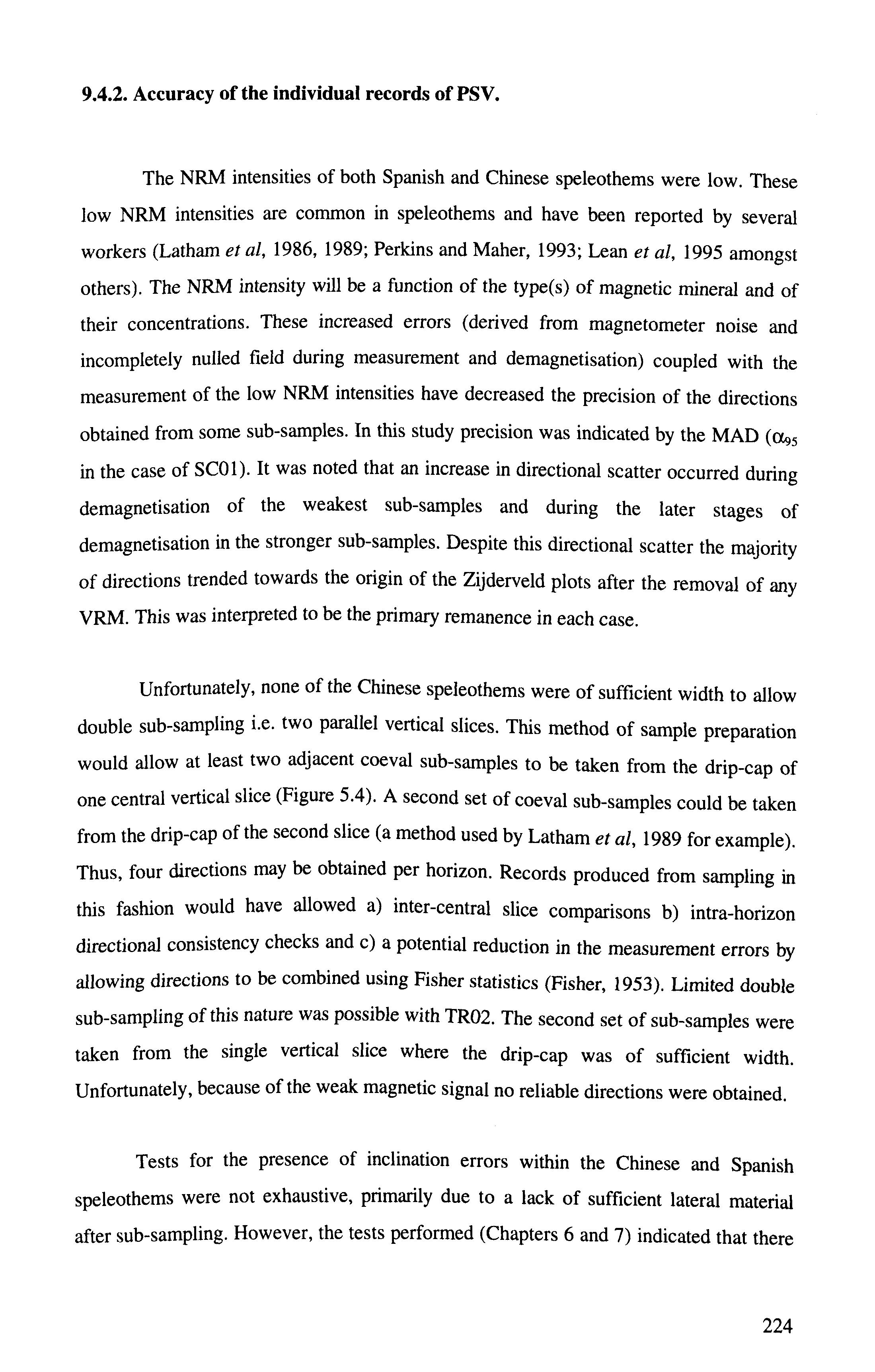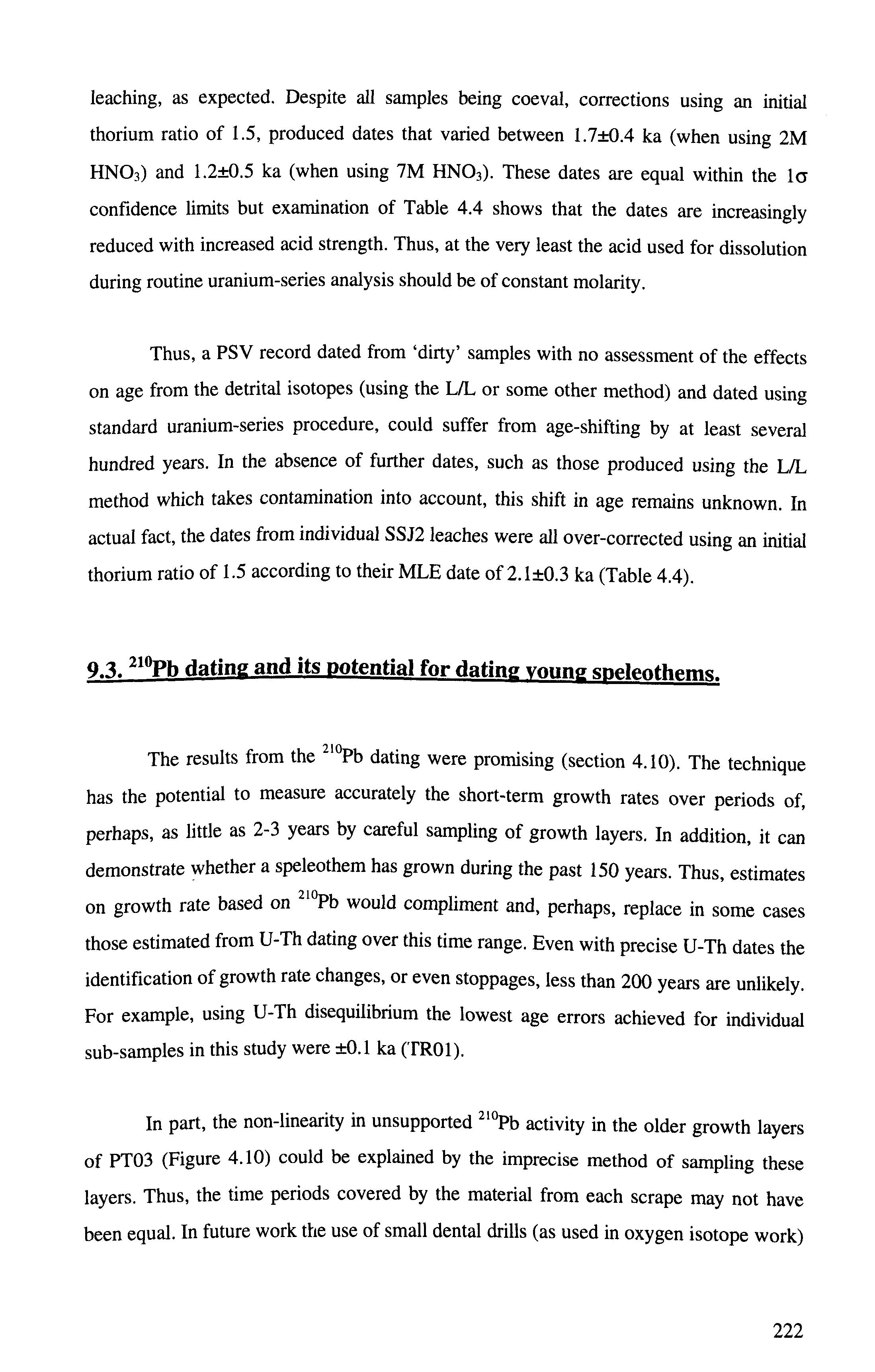A third potential source of magnetic minerals in these speleothems is from organic compounds (humic and fulvic acids) which chelate iron (II) and iron (III) giving rise to a CRM. These compounds release iron in a reduced state upon calcite crystallisation to form SD magnetite (Latham and Ford, 1993). However, the processes of de-chelation and production of authigenic magnetite in caves have not been studied fully (Perkins, 1993; Latham and Ford, 1993). However, in this study, the relationship between the quantity of undissolved detritus and the NRM intensity (section
8.6)
particularly in the case of the Xingwen speleothems, does suggest that a DRM is primarily responsible for the remanence. That is not to say a CRM does not also exist but rather that its presence may be masked by the greater contribution from a DRM.
Q.6. Future studies on speleothems. Many suggestions for future work have been discussed in their relevant chapters but those with the most potential are mentioned here. This study probably represents the most complete series of PSV records of speleothems from a single locality. The results suggest that similar sampling schemes in other areas could yield similar suites of results which may expand the global coverage of speleothem PSV data.
Because the potential exists for detrital contamination to affect the ages of young ‘dirty’ samples (section 9.2.3) the L/L method should be undertaken as a matter of routine Should time and facilities allow, the TSD method (section 4.4.3.3) should be used in preference to the L/L method. However, the frequent lack of sufficient coeval material in the case of speleothems means that these methods are often not possible when using alpha-spectrometry. The surest way to undertake L/L analysis on contaminated speleothems would be with mass-spectrometry primarily because of its increased measurement accuracy. In addition, smaller samples of <1 gram can be used which would allow many coeval leaches to be performed. Thus, the accuracy of any fitted isochron would be increased.
The U-Th method and also the 210Pb method, have been shown to be effective in dating modem speleothems with active drip-caps. However, below 5 ka the lower limits
231








